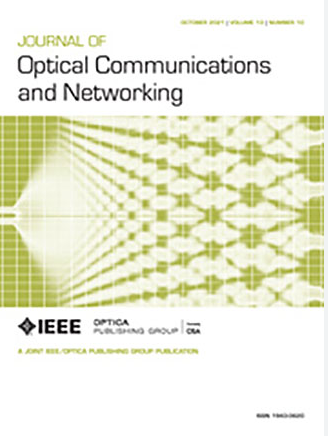Access point selection based on beacon signals in optical satellite networks
IF 4
2区 计算机科学
Q1 COMPUTER SCIENCE, HARDWARE & ARCHITECTURE
引用次数: 0
Abstract
Megasatellite constellations (MSCs) represent the forefront of satellite network development, encompassing a vast network of interconnected low-Earth orbit (LEO) satellites. The satellites in MSCs will be interconnected with laser links, capitalizing on the laser’s impressive bandwidth and robust security features. This interconnectivity enables the provision of high-bandwidth and low-latency Internet services on a global scale. However, LEO satellite networks exhibit high dynamics, especially between satellite nodes and ground nodes. This poses challenges to the high-bandwidth communication capabilities and quality of service in satellite networks. In such cases, the selection of different satellite access points will significantly affect the performance of the communication. This paper proposes an access point selection algorithm that chooses access satellites based on information from the satellite’s beacon signals, achieving lower service latency and handover times. The algorithm innovatively leverages the regularity of the inter-satellite topology in large-scale satellite networks to evaluate access points, resulting in the selection of preferred access points. Simulation results show that the algorithm achieves access satellite service performance that reduces service latency by 13% and handover frequencies by 40% compared to random access satellite selection.光学卫星网络中基于信标信号的接入点选择
巨型卫星星座(MSCs)代表了卫星网络发展的前沿,包含了一个由相互连接的低地球轨道(LEO)卫星组成的庞大网络。MSCs中的卫星将通过激光链路相互连接,利用激光令人印象深刻的带宽和强大的安全特性。这种互联性使得在全球范围内提供高带宽和低延迟的互联网服务成为可能。然而,低轨道卫星网络表现出高度的动态性,特别是在卫星节点和地面节点之间。这对卫星网络的高带宽通信能力和服务质量提出了挑战。在这种情况下,选择不同的卫星接入点将显著影响通信性能。本文提出了一种基于卫星信标信号信息选择接入卫星的接入点选择算法,实现了较低的业务延迟和切换时间。该算法创新性地利用大规模卫星网络中星间拓扑的规律性来评估接入点,从而实现首选接入点的选择。仿真结果表明,与随机选择接入卫星相比,该算法实现的接入卫星业务性能降低了13%,切换频率降低了40%。
本文章由计算机程序翻译,如有差异,请以英文原文为准。
求助全文
约1分钟内获得全文
求助全文
来源期刊
CiteScore
9.40
自引率
16.00%
发文量
104
审稿时长
4 months
期刊介绍:
The scope of the Journal includes advances in the state-of-the-art of optical networking science, technology, and engineering. Both theoretical contributions (including new techniques, concepts, analyses, and economic studies) and practical contributions (including optical networking experiments, prototypes, and new applications) are encouraged. Subareas of interest include the architecture and design of optical networks, optical network survivability and security, software-defined optical networking, elastic optical networks, data and control plane advances, network management related innovation, and optical access networks. Enabling technologies and their applications are suitable topics only if the results are shown to directly impact optical networking beyond simple point-to-point networks.

 求助内容:
求助内容: 应助结果提醒方式:
应助结果提醒方式:


